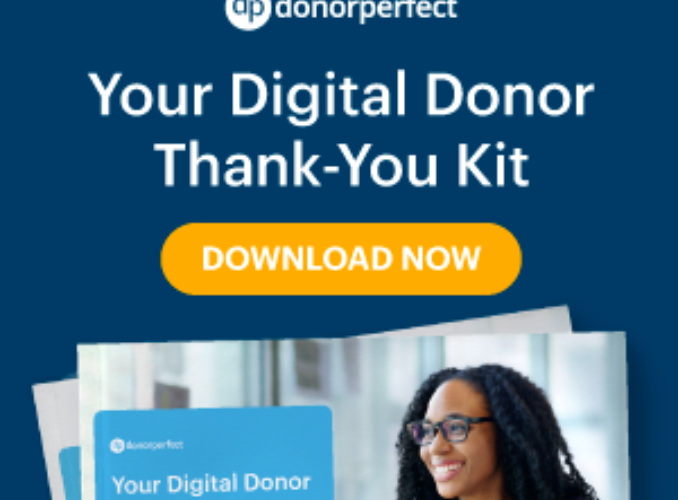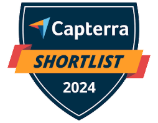Co-authored by Cherian Koshy, CFRE, and Christy Smaglio, DonorPerfect
With 97% of today’s donors citing impact as their main reason for giving, understanding the donor journey is key to inspiring transformative change. Mapping out your organization’s donor journeys helps you create meaningful experiences that significantly impact your fundraising success and mission fulfillment. By studying the psychology behind donor behavior and employing strategic donor management systems, nonprofits benefit greatly from building these powerful connections with supporters.
What are donor journeys?
A donor journey represents a supporter’s complete series of interactions with an organization, from initial awareness to long-term advocacy. By mapping and optimizing this journey, you can create more meaningful connections, increase donor retention, and ultimately, make a greater impact on your mission.
The five stages of an effective donor journey
- Awareness: How donors first learn about your organization
- Analysis: The evaluation process where donors decide whether to contribute
- Action: The decision to give or get involved
- Acknowledgment: How organizations express gratitude and reinforce the donor’s decision
- Advocacy: When donors champion the cause and encourage others to join
These stages are not always linear. Donors may revisit earlier stages based on new interactions or changes in their relationship with the organization. By tailoring this journey, nonprofits can cultivate stronger emotional connections that guide supporters from initial contact to passionate advocacy.
Why donor journeys matter
By understanding donor behavior and employing thoughtful donor management systems, nonprofits can transform one-time contributors into lifelong advocates.
Implementing an effective donor journey strategy can lead to:
- Higher retention rates: Satisfied donors are more likely to continue supporting your cause.
- Increased contributions: Personalized and engaging experiences can lead to larger and more frequent gifts.
- Stronger advocacy: Passionate donors often become champions, spreading awareness and bringing in new supporters.
A well-mapped donor journey helps you connect with supporters on a deeper level by meeting them where they are—whether it’s inspiring awareness, encouraging their first gift, or cultivating advocacy for your mission. When you prioritize creating a seamless and rewarding donor experience, you’re not just growing your donor base—you’re inspiring lasting loyalty and building a community that’s passionate about your cause.
The role of psychology in donor journeys
Understanding donor behavior is pivotal to designing effective donor journeys. Donations are more than financial transactions; they’re deeply emotional and often tied to a donor’s values and experiences. By recognizing the psychological factors at play, nonprofits can create tailored strategies that enhance donor engagement and satisfaction.
Here are four key psychological principles that drive donor behavior:
- Identifiable victim effect: Donors are more likely to feel empathy and take action when they can connect with a specific, identifiable individual in need rather than a larger, faceless group. By highlighting the personal stories of individuals impacted by your organization, nonprofits can create a stronger emotional pull that motivates donors to contribute.
- Social proof: People often follow the actions of others. Showcasing testimonials, highlighting milestones, and sharing success stories can motivate potential donors to contribute.
- Reciprocity: Donors are more likely to give when they feel appreciated. Thoughtful gestures—like personalized thank-you notes or exclusive updates—can deepen the donor’s connection to your organization.
- Emotional connection: Donors are drawn to causes that evoke strong emotions. Compelling storytelling that highlights the tangible impact of contributions can foster empathy and inspire action.
Key elements of successful donor journeys
To optimize donor journeys, nonprofits need to focus on several critical elements:
1. Personalized experiences
Modern donors expect personalized engagement. By leveraging donor management systems and CRM tools, nonprofits can segment audiences to create meaningful, individualized experiences that resonate with each supporter’s motivations and preferences.
For example, DonorPerfect simplifies personalized communication with mail and email templates that automatically merge with your donor data.
2. Multi-channel engagement
Donors interact with organizations across various platforms, from social media to email campaigns. A consistent and seamless experience across these channels is crucial for building strong relationships.
Reaching your constituents via email, social media, text, printed media with QR codes, etc, has never been easier. DonorPerfect provides all the tools you need to meet your donors where they are—all in one place. Learn more in a free demo!
3. Data-driven insights
Regularly assess your donor journey’s effectiveness and be willing to make data-driven adjustments. Key metrics to track include:
- Donor retention rate
- Lifetime value
- Conversion rate
- Giving frequency
- Average gift size
- Donor engagement score
DonorPerfect puts key performance indicators (KPIs) front and center with an entire dashboard focused on these numbers so you can see how your fundraising efforts are paying off at a glance. Learn more in our recent post, How to Track Donor Data & Nonprofit Analytics Using a Fundraising Dashboard.
4. Modern technology
The right tech tools can dramatically improve your ability to engage donors effectively, even with limited resources. Key technologies include:
- Customer Relationship Management (CRM) systems
- Email marketing platforms
- Online giving tools
- Social media management software
Overcoming common challenges in donor management
Building and maintaining effective donor journeys can be challenging. Limited resources, data integration issues, staff retention, and scaling personalized experiences are common hurdles. However, nonprofits can address these challenges by investing in the right tools and fostering a culture of adaptability within their organizations. For instance:
- Adopt donor management systems: These tools simplify tracking donor engagement, segmenting audiences, and personalizing communications.
- Streamline messaging: Ensure consistency across platforms to maintain a unified voice and vision.
- Focus on continuous improvement: Regularly evaluate strategies and be open to making data-driven adjustments.
By understanding what motivates donors at each stage, you can build experiences that resonate on a personal level. This approach ensures your donors feel valued, heard, and inspired to stay engaged. A thoughtful donor journey also empowers your team by providing a clear framework for prioritizing efforts, fostering collaboration, and driving measurable results. With the right focus, the donor journey becomes more than a strategy—it’s a pathway to long-term mission success.
Optimizing donor journeys with effective donor management
While understanding donor psychology is essential, effectively managing donor journeys requires the right tools and strategies. This is where donor management systems come into play. Organizations should adopt donor management software that can help them track donor behavior, segment audiences, and create targeted engagement strategies.
Robust donor management software allows nonprofits to:
- Track donor engagement: By monitoring donor interactions, organizations can better understand how individuals are progressing through their journey. This data helps identify when donors are most engaged and when they might be at risk of disengaging.
- Segment donors effectively: Not all donors are the same. Some might prefer one-time contributions, while others are more inclined to give recurring donations. By segmenting the donor base, fundraisers can better understand giving patterns and preferences to provide personalized experiences that cater to each group’s tastes.
- Enhance communication: With effective donor management software, nonprofits can streamline communication, ensuring that donors receive the right message at the right time. This can lead to higher engagement and retention rates, as well as increased lifetime value.
Start your donor journey transformation today
Mastering the art and science of donor journeys is a game-changer for nonprofits of all sizes. By mapping intentional experiences, leveraging technology, and prioritizing personalized interactions, organizations can build lasting relationships that fuel their mission.Our comprehensive e-book, Donor Journeys: Igniting Passion for Lifelong Engagement, provides in-depth strategies, practical tips, and real-world examples to help you create powerful donor journeys that inspire a lifelong commitment to your cause. Download for free below and start transforming your approach!






